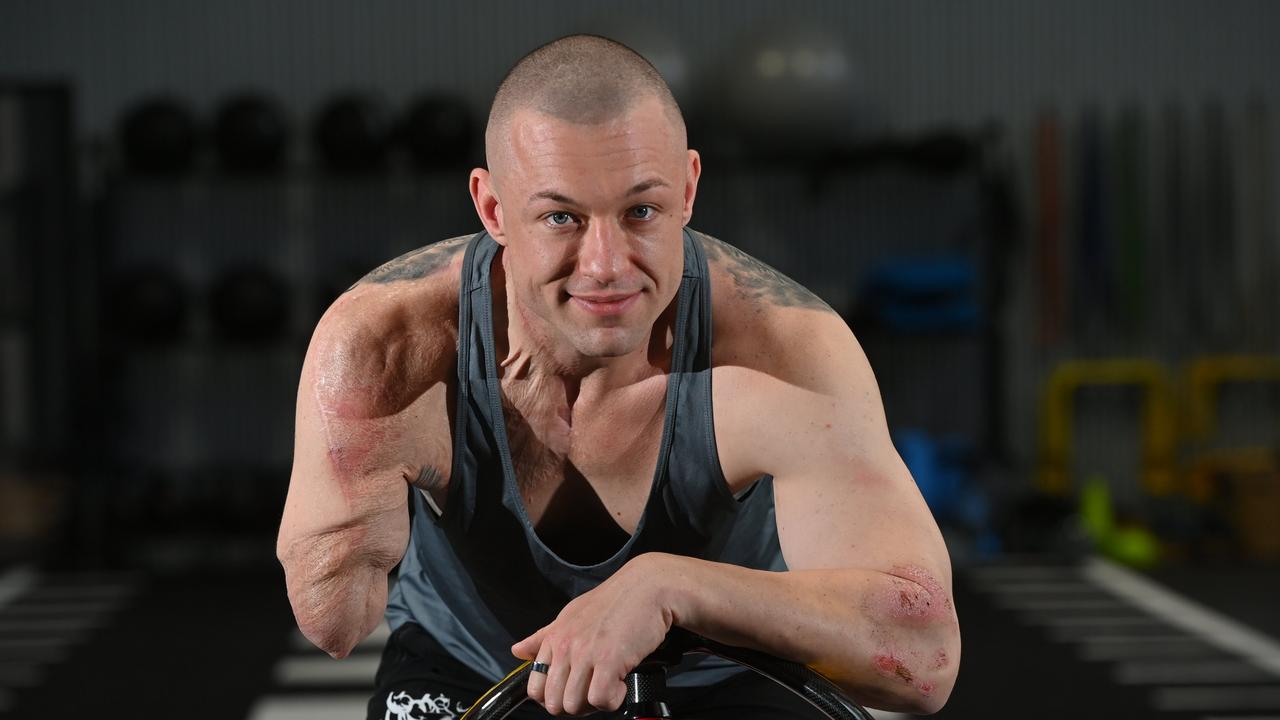Amputees could feel warmth of human touch with new bionic technology
Amputees could soon experience the warmth of human touch with new bionic technology

READING LEVEL: ORANGE
Fabrizio Fidati, who lost his right hand in an accident 25 years ago, had not experienced the sensation* of temperature in his missing digits* until trials for a bionic* technology unlocked the cool of iced water and heat of a stove burner for him.
Eventually, the researchers hope it could lead to a more natural feeling of loved ones when he is wearing his prosthetic*.
With thermal electrodes* placed on the skin of their residual* arm, amputees such as Fidati reported feeling hot or cold sensations in their phantom* hand and fingers, as well as directly on the arm, according to the trials by the Swiss university EPFL.
The 59-year-old Italian is among 27 amputees who took part in the trials, with 17 of them reporting a successful test.
“The first time I took part in the experiment, I felt like I had rediscovered feeling in my phantom hand,” he said.
Those tested have also been able to differentiate between plastic, glass and copper, pointing to where they feel the sensations on images of a hand.

“By stimulating* specific parts of the residual arm of the amputees, we could induce sensation in the missing phantom hands,” said Dr Solaiman Shokur, a senior scientist neuroengineer at EPFL who co-led the study.
“What they feel in this phantom hand is similar to what they feel on their intact hand.”
A woman who also took part the study, Francesca Rossi, said she had previously been able to feel tingling* in her missing hand when she touched the end of her arm, but said: “Feeling the temperature variation is a different thing, something important … something beautiful.”
The technology, which has been tested for more than two years, does not need to be implanted*. It can be worn on the skin and combined with a regular prosthetic.
Dr Silvestro Micera, who co-led the study with Dr Shokur, said they now wanted to test the device on a larger scale* before combining it with other technologies to improve tactile sensations* in amputees.
“We think that we could give people a better sense of embodiment* of their hands and maybe even give them the possibility to feel their loved ones in a much more natural way,” Dr Shokur added.

Mr Fidati said that beyond helping amputees with daily tasks such as cooking, the technology could open the door for him to feel the warmth of others.
“There is also a social aspect that is important,” he said. “When I meet someone and shake his hand, I expect to feel heat.”
Dr Micera, a professor at EPFL said: “Temperature feedback is essential for relaying information that goes beyond touch, it leads to feelings of affection*. We are social beings and warmth is an important part of that.”
GLOSSARY
- sensation: the feeling or perception of something through the senses, like touch or temperature
- digits: fingers or toes of a human hand or foot
- bionic: technology that combines electronic and mechanical parts to enhance or replace a biological function
- prosthetic: an artificial body part, such as a hand or limb, that is used to replace a missing or injured body part
- thermal electrodes: devices that are used to measure or stimulate temperature-related signals in the body
- phantom: referring to something that is perceived or felt, even though it is not physically present
- stimulating: the act of encouraging or triggering a response or reaction in something or someone
- residual: remaining or left over after a part has been removed or lost
- electrodes: devices that conduct electricity and are used to detect or stimulate electrical signals in the body
- tingling: a slight prickling or stinging sensation on the skin
- implant: to insert or place something, such as a device or object, inside the body
- tactile: relating to the sense of touch
- embodiment: the state of being present or felt in a physical form; in this context, it refers to feeling more connected to one’s prosthetic hand
- scale: referring to a larger or broader scope or size
- tactile sensations: the ability to feel different textures, temperatures, or objects through touch
- affection: warm feelings of fondness, care, or love towards someone
EXTRA READING
Mia's important message on disability
Stone Age surgeon performed ancient amputation
Miracle change after double hand transplant
QUICK QUIZ
- How did the bionic technology trials help Fabrizio Fidati experience temperature sensations in his missing hand?
- How many amputees participated in the trials?
- What did the participants in the study report feeling when thermal electrodes were placed on their residual arm?
- What can amputees differentiate between using the technology tested in the study?
- Why is the development of this technology significant for amputees’ social interactions and sense of touch?
LISTEN TO THIS STORY
CLASSROOM ACTIVITIES
1. Choose the photos
Create a labelled diagram that will help younger kids understand how the bionic technology works.
Time: allow 25 minutes to complete this activity.
Curriculum Links: English, Science, Health and Physical Education, Visual Communication Design
2. Extension
What steps do you think the scientists took to make sure that the people in the experiments really were experiencing the sensations? Write a list of things that you think they would do to make sure that their testing was accurate.
Time: allow 25 minutes for this activity
Curriculum Links: English; Science
VCOP ACTIVITY
To sum it up
After reading the article, use your comprehension skills to summarise in a maximum of three sentences what the article is about.
Think about:
What is the main topic or idea?
What is an important or interesting fact?
Who was involved (people or places)?
Use your VCOP skills to re-read your summary to make sure it is clear, specific and well punctuated.

